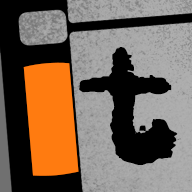It's for a conference room scene I am writing, and all the people in the room have to look at a screen as the director character is showing footage, explaining what is happening.
I was thinking that the footage could be displayed through a digital projector. The main reason is because you can make the image really big on the wall, compared to a TV and the lighting.
With a projector, the room will logically be much darker, which can allow for that cinematic projector lighting you see in older movies that have it, if you know what I mean.
But you never see people use projectors any more in offices. It's always TV now, even on shows like 24. What do you think? Is it too old of technology to get away with in a script that is suppose to be set in modern times?
I was thinking that the footage could be displayed through a digital projector. The main reason is because you can make the image really big on the wall, compared to a TV and the lighting.
With a projector, the room will logically be much darker, which can allow for that cinematic projector lighting you see in older movies that have it, if you know what I mean.
But you never see people use projectors any more in offices. It's always TV now, even on shows like 24. What do you think? Is it too old of technology to get away with in a script that is suppose to be set in modern times?


